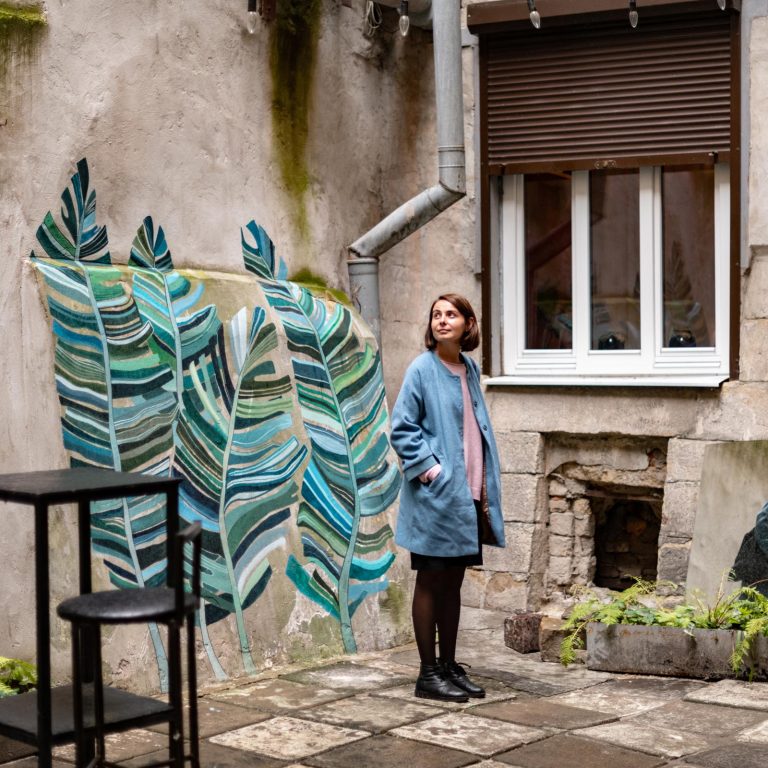In 2011, in one of the central courtyards of Lviv, a boutique shop- opened to bring together all those interested in the arts and crafts, with a particular focus on glasswork. A group of friends and experimenters opened “Something Interesting”, which moved to Koliyivshchyna Square in early 2019. There is glass everywhere in the shop: from original mosaics and mirrors in the yard to the designer jewellery, lamps, and paintings. Wishing to expand the Ukrainian creativity, the founders of “Something Interesting” decided to open TSEKH in an abandoned factory. They believe that Ukrainian glass-making can develop from a craft to pure art, and offer locals the chance to understand the aesthetic potential by learning to make their own new artistic creations
A century ago Lviv was known not for coffee and chocolate, but for its glass blowing industry. At that time Lviv Glasswork Plant was one of the most powerful in Ukraine, and at the Lviv Pilot Production Ceramic and Sculpture Factory, a special team of glassblowers created original glass products .
Whilethere was a period when glassmaking tended towards utilitarianism, in the middle of the twentieth century, art glass became considered a fine art.
After the collapse of the USSR and the transition to a free-market economy, glass production stopped, but then in the 1990s the International Symposium of Blown Glass in Lviv was founded. It brought together the best artists from all over the world with the mission to create new products, share experiences, and eventually design exhibitions and provide lectures. Such events were the initiative of the Department of Art Glass of the Lviv National Academy of Arts. Since the department was first established in the 1960s, it has remained the only department in Ukraine that provides students with both creative design, and academic training. Students have access to a blowing furnace for their projects, one of only ten in Europe. Lviv further grew as a center of creative art glass when in 1963 the Lviv Pilot Production Ceramic and Sculpture Factory built an experimental laboratory of art blown glass.
Thanks to the academic department, Lviv’s reputation as the center of artistic glass grew throughout Ukraine.
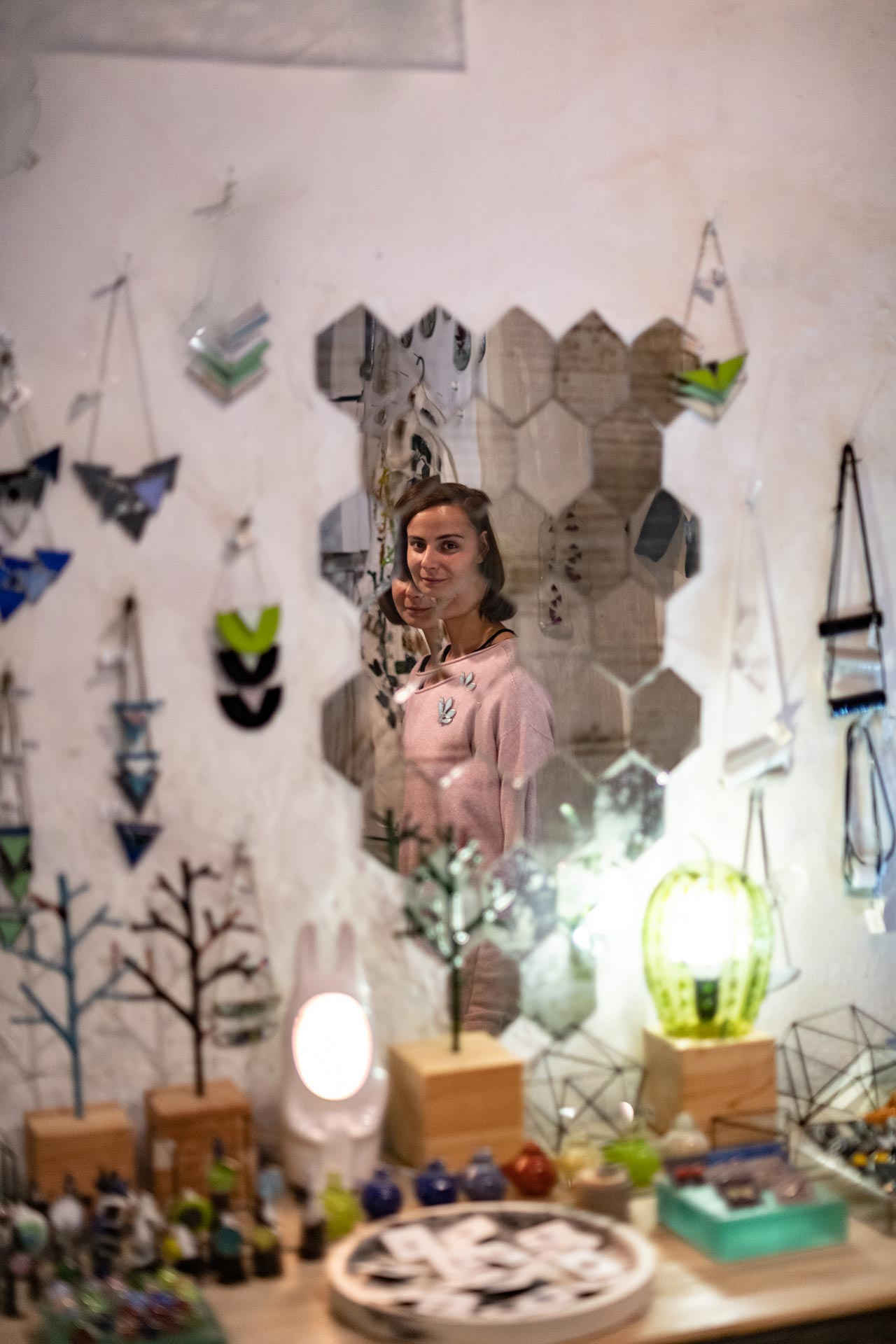

Roksolana
Roksolana Khudoba, a graduate of Lviv Academy of Arts from Ukraine’s only department of Art Glass is one of the owners of”Something interesting” and the creator of TSEKH. Though deciding to study art glass was quite spontaneous, it turned out to be the right decision. She says that at the time that she enrolled at the university, the faculty of “Interior Design” was extremely popular, but one of her friends advised her to go for the “Glass” department, where there was much less competition :
— I was like, “Glass? What should I do there?” — “Well, you will be able to take a faculty position afterwards.” But I’m very happy about it, because the teachers were fantastic, they allowed everything and all experiments. You could make flat and blown glass using super techniques with colored and transparent glass. So I’m very happy.
Roksolana loves her job and says that it was the years she studied within the department’s competitive environment that gave her the motivation to move forward:
— I liked that we didn’t focus too much on the technical nuances, but instead on how to come up with a great sketch, how to make an idea cool, and how to share it. That is, focused on the artistic side. How to slice a bottle – you can learn this anywhere.You can go to a stained-glass studio where they can’t draw but they can teach you how to grind and solder;it’s easy to learn these techniques. But to create something cool, something that distinguishes you from the rest of the world — myacademic experience gave me a unique head start in this. We also had a super-great group and strong competition. Everybody was pushing each other it was like “Yeah, I need to do more! If you’re doing this, then I’ll do 5 more additional projects”.
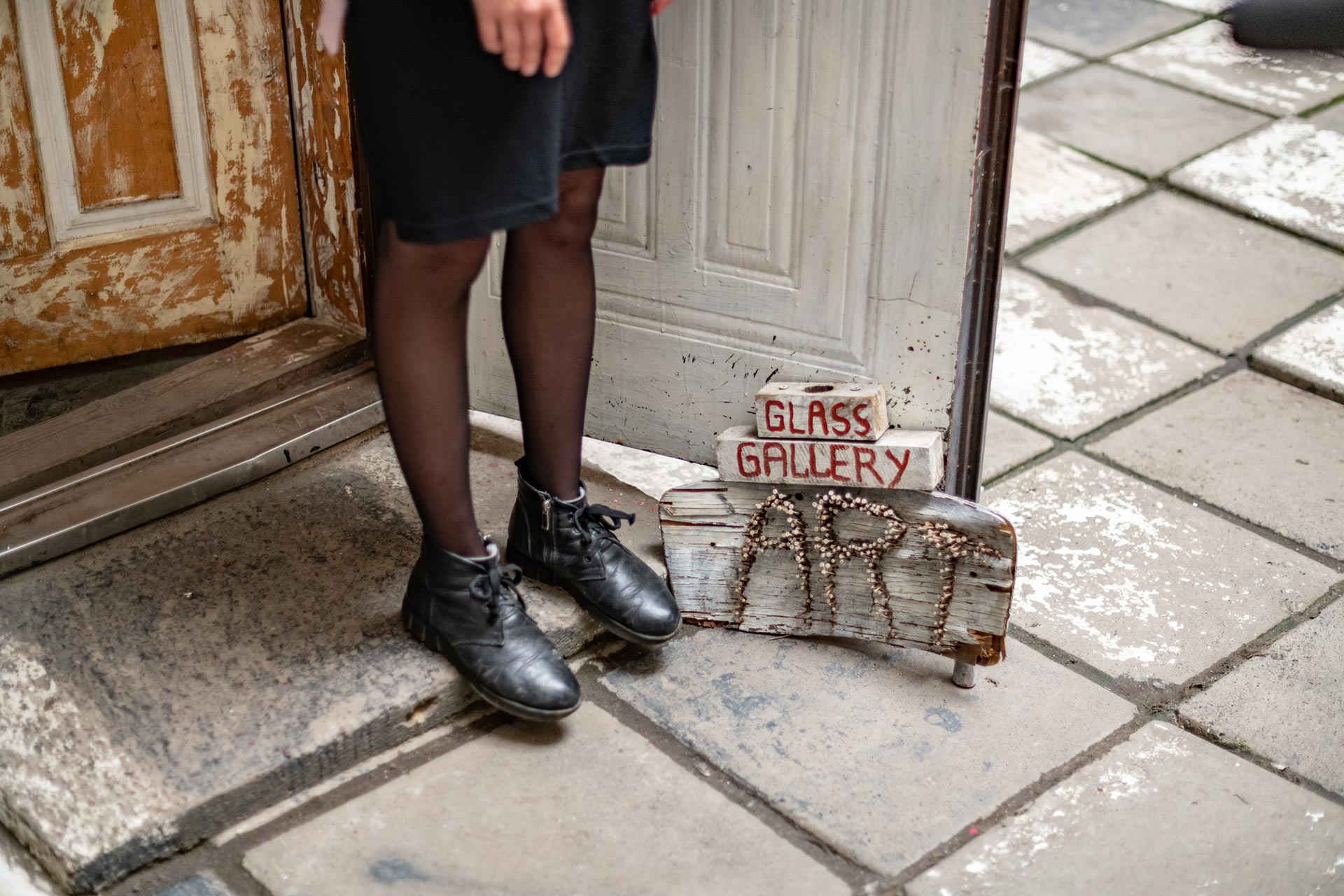
Opening “Something interesting”
It all began when Roksolana and her friend were making jewelry while studying at the academy. At the time, Roman, an old highschool friend, who worked as a salesman offered to sell Roksolana and her friend’s products and also take them to festivals. After many conversations they began working together and demand for their products quickly grew.
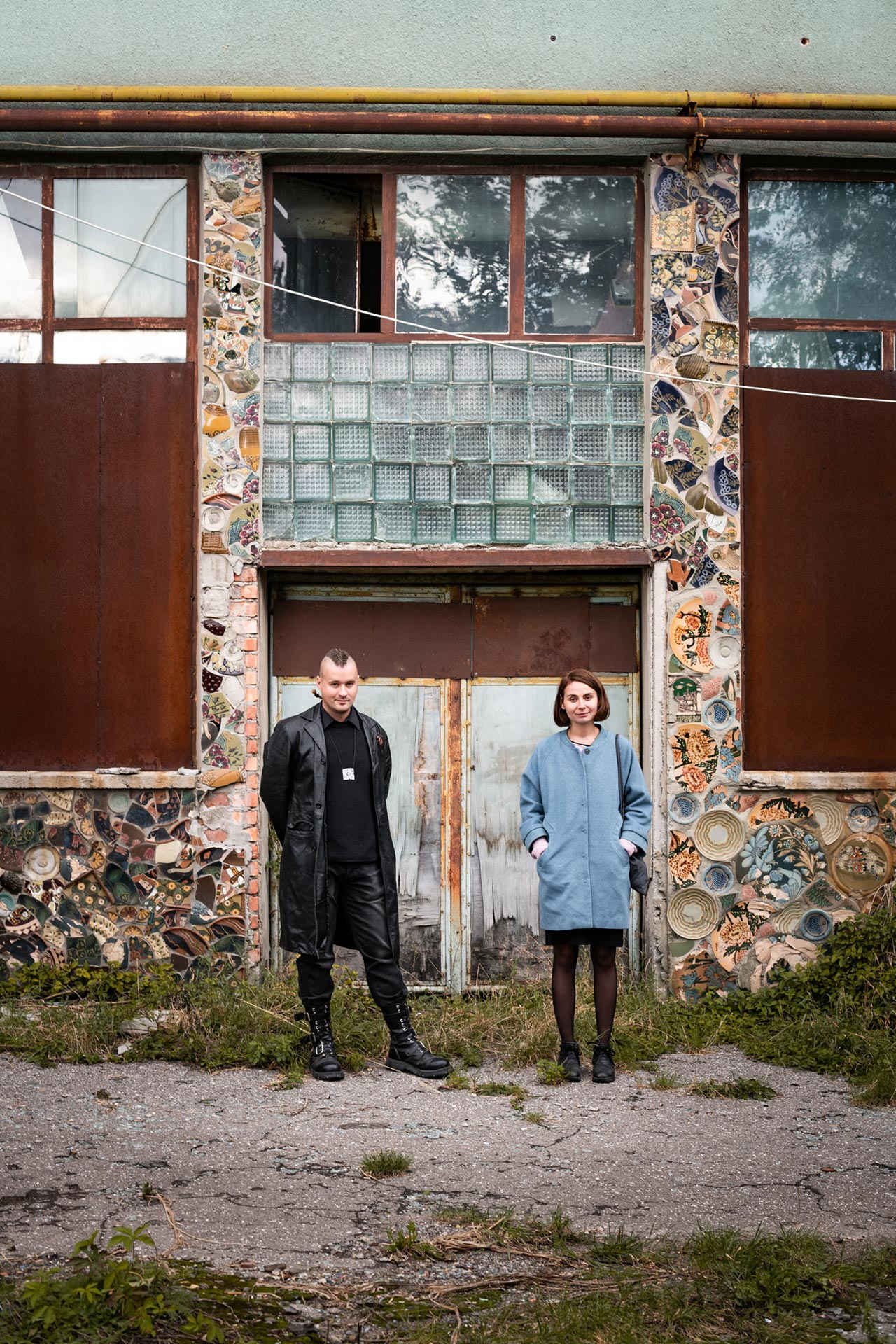
Roksolana remembers how their startup was born:
— When we were selling our products we just had a 70×70 tableand went to all sorts of festivals, student years, parties… We turned our kitchen, where I lived with my friend, into our studio. If you came into the kitchen then you saw that everything was being cut there.
Roman adds that they had problems with circulating the jewelry, because the different stores that they tried to work with were not always honest with them.But this didn’t stop them or their vision– it was clear by the positive responses at the concerts, fairs, and competitions that people valued their glass products. And so, the next step was to create their own shop “Something interesting” on the Market Square [ed. the central square in the city], where any dream can be realized. Roxolana and Roman started planning open-air exhibitions, filling in their shop with different items, holding master classes in this place. The name of the place appeared quite simply:
— When we opened the shop and needed to make a sign to put outside in the Market Square, we realized: “Oh, we need a name!” And somebody blurted out: “We need something interesting!” so- “Something interesting”, and (that’s where it came from – author)
TSEKH (“Creative Craft Laboratory”) — as “Interesting Artists’ Experiments”.
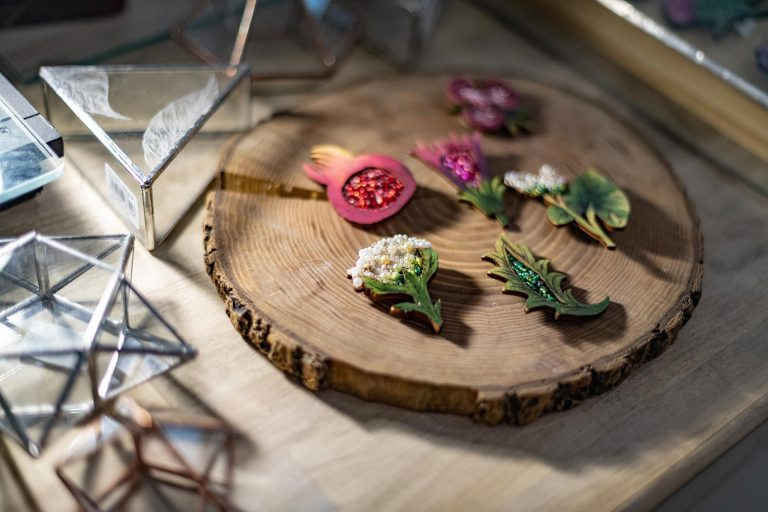
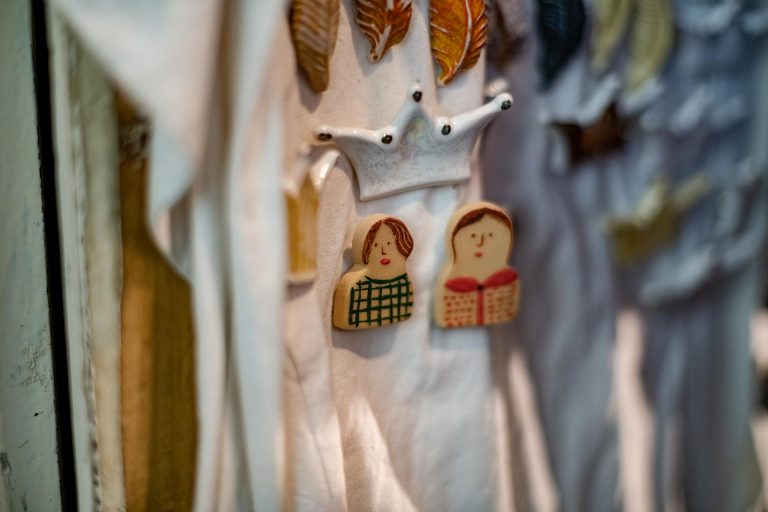
slideshow
True to its name, the shop supports many experiments and activities, and in addition they also run a cafe on the side. The shop has gradually filled with various artistic pieces made from wood, textiles and metal, but it still primarily focuses on glass:
— This is because there is today very little glass production in Lviv even though previously Lviv had a huge glass industry, and we even have a department — the only one in Ukraine — of art glass. Now not only are my works exhibited here but pieces of young glass artists who work alongside me who are either still studying or who have already graduated.
In addition to their glass paintings, dishes and accessories, there are also ceramics, jewelry, and a reading corner with Ukrainian magazines, such as La Boussole, Fish, Garbuz as well as a bookshelf. The founders encourage visitors to bring their own books here.
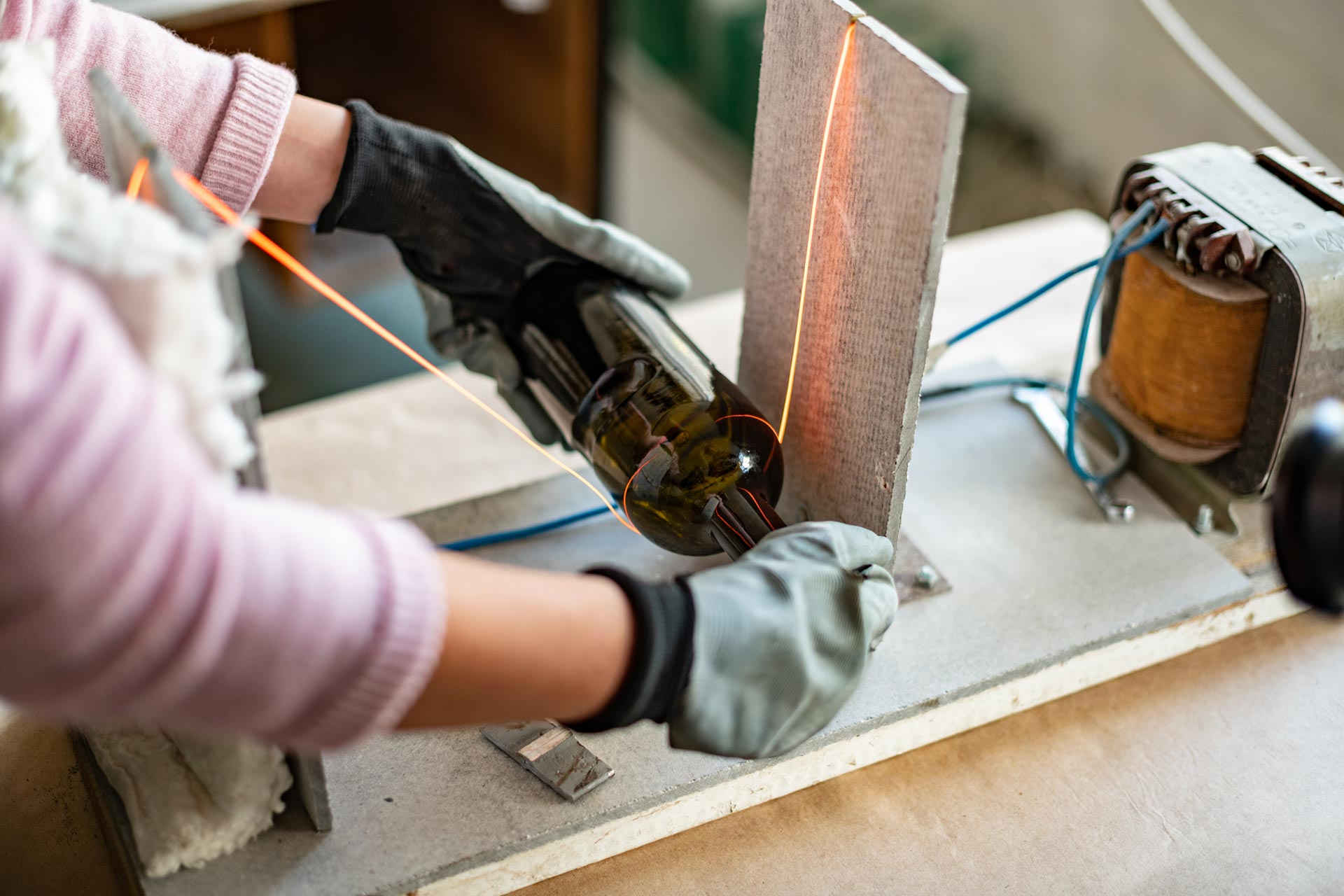
Upcycled Art
The founders of “Something interesting” resource efficiency to be central to the space’s creative mission and philosophy. As in other sectors, manufacturers greatly benefit from recycling — from reducing emissions and extending the service life of the equipment (ovens), to saving energy also an energy saving. Glass is ideal for recycling (it can be almost infinitely recycled) since its structure does not deteriorate.
Over the past few decades as interest in ecology and environmentalism has grown, artists in Europe and the United States have begun to develop glass recycling technologies. For example, old cans or windows have been used to make decorative items such as wine glasses, vases, bowls, containers, candle holders and soap dispensers. Artists used old glass and raw glass materials to create stained-glass windows, bright sculptures and art installations. The University of Brighton even created a special course dedicated to the creative recycling of used glass and published its findings in the final report “Creative Recycling of Waste Glass as a Tool for Teaching and Learning”. The authors promote glass waste as a material for creative projects.
For “Something interesting”, Roxolana created a series called “Art Recycling”, which includes dishes and decor: candlesticks, stands, tissue holders, plates, storage containers for grain, lamps, florariums. All these products are made from recycled glass bottles. Roxolana began art recycling after obtaining a muffle furnace. Through continuous experimentation by trial, error and research, she сreated a unique method of fusing bottles.
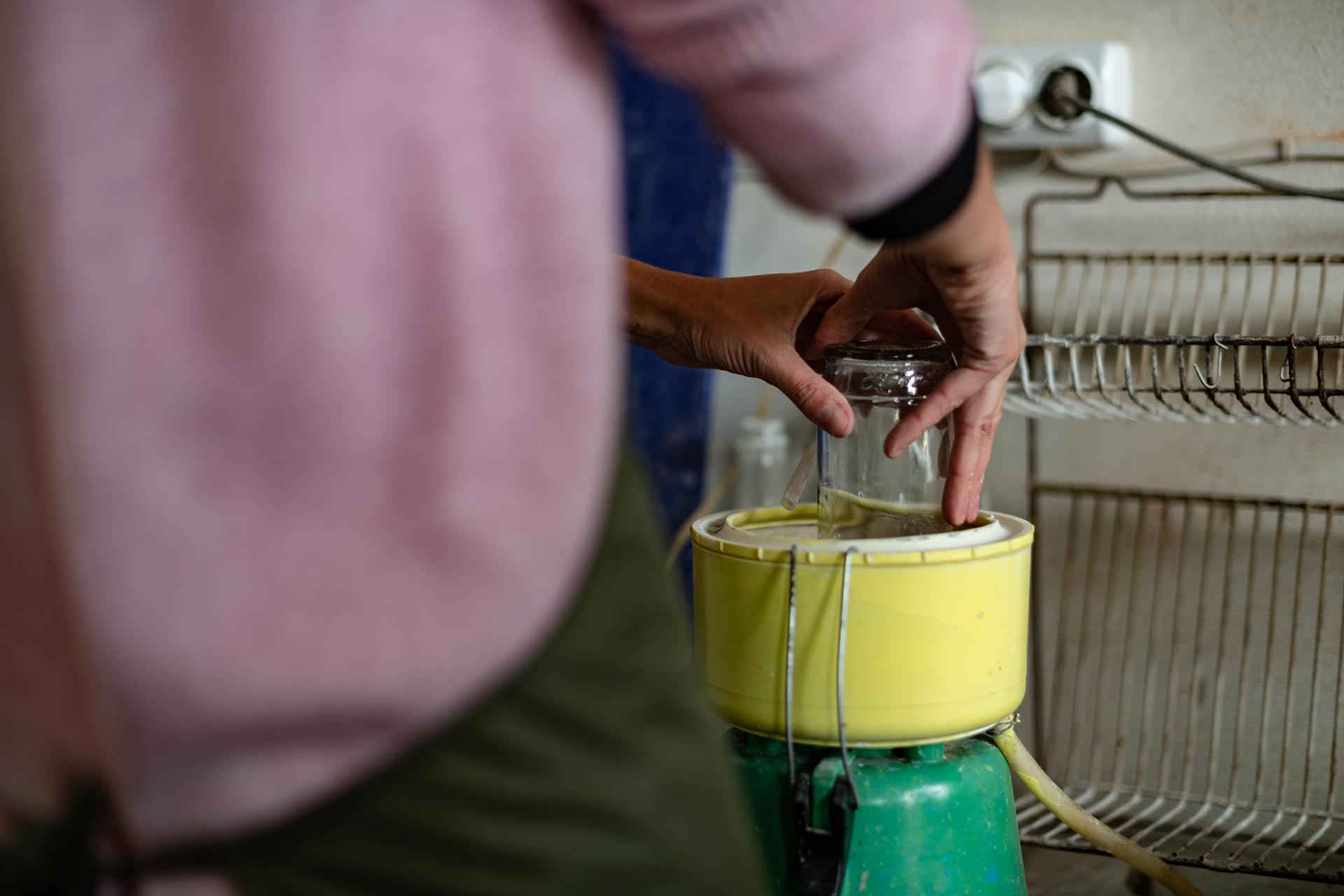
The art recycling process requires several stages. When used bottles or cans are delivered to the craftworkers at “Something interesting”, they first need to be disinfected, and then they are sintered in the muffle furnace at high temperature. Then it’s up to the individual craftsworker’s artistic idea to shape the product.
Environmental preservation movements are growing in response to environmental problems and widespread consumerism among parts of the population. Such movements have popularized “The Three R’s”–reduce, reuse, recycle– which promote reducing pollution and the amount of garbage in landfills and preserving natural resources. Roxolana explains how she and her colleagues have gradually become more eco-conscious as she has become involved in environmental conservation through her art products.
— We’ve decided that if we’re already working with glass, then it includes garbage too and there’s a lot of garbage. We always hunt … Already back at the academy, when we began sintering bottles, if were just walking down the street near the trash can: “Oh wow, the shape of this bottle is so beautiful! It will make such things” and collected them. My house turned into a garbage can. And all my friends knew it. We collected the baby food cans from friends with small children. It was real teamwork. Many of our clients know that we recycle.
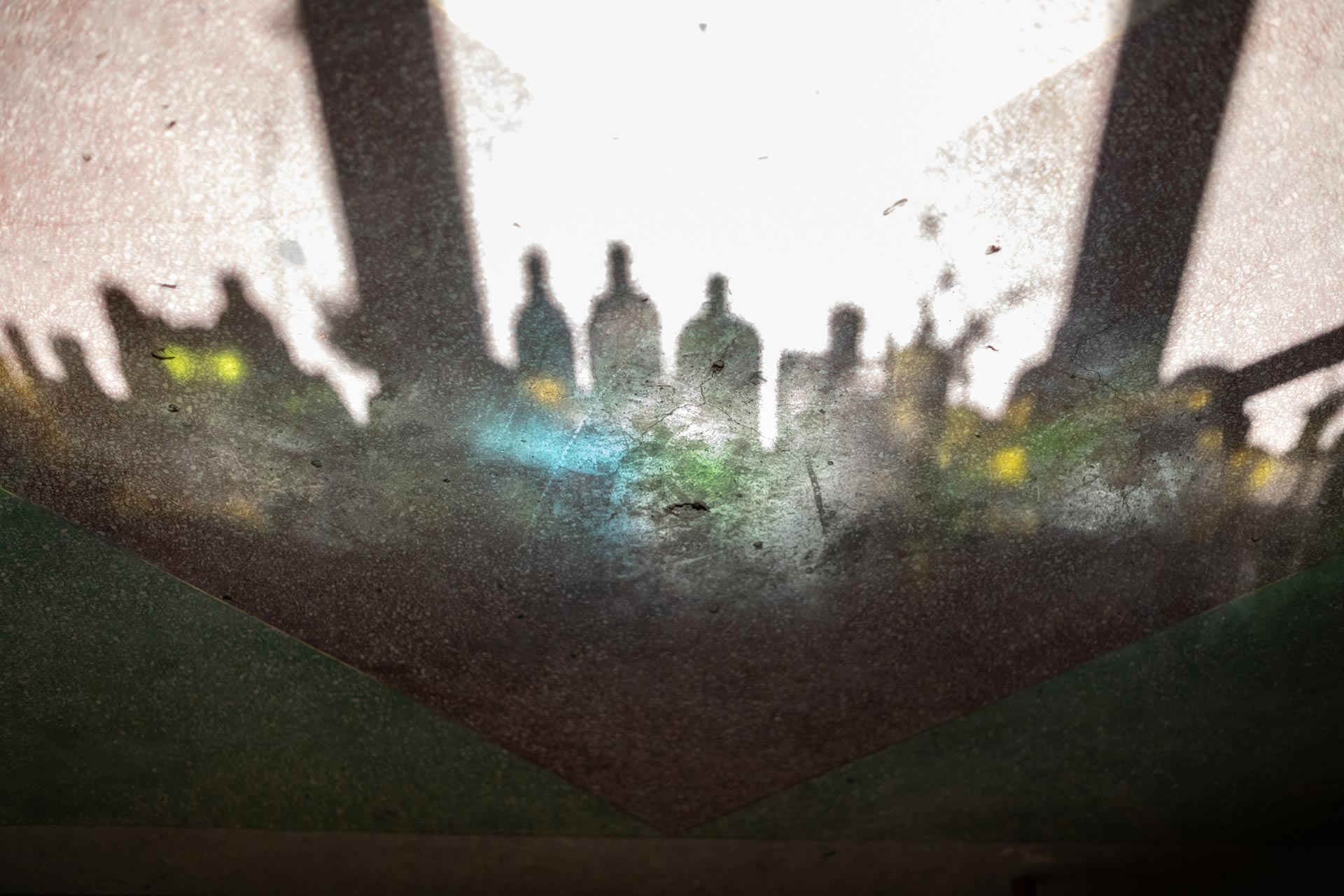
The Art-recycling production is carried out at TSEKH (Craft Laboratory). At the site there is a huge box where the collected bottles are stored. Roxolana hopes that as soon as the space’s capabilityincreases, it will be possible to recycle even more raw materials:
— We have a separate room where we collect all the bottles. We collect them, bringing them from Market Square (we are in contact with different coffee houses and restaurants). We bring them here, and then as I have shown you, either we put them in the muffle oven and sinter — where they can be made into coasters and plates; or we cut and polish them to create a glass jar.
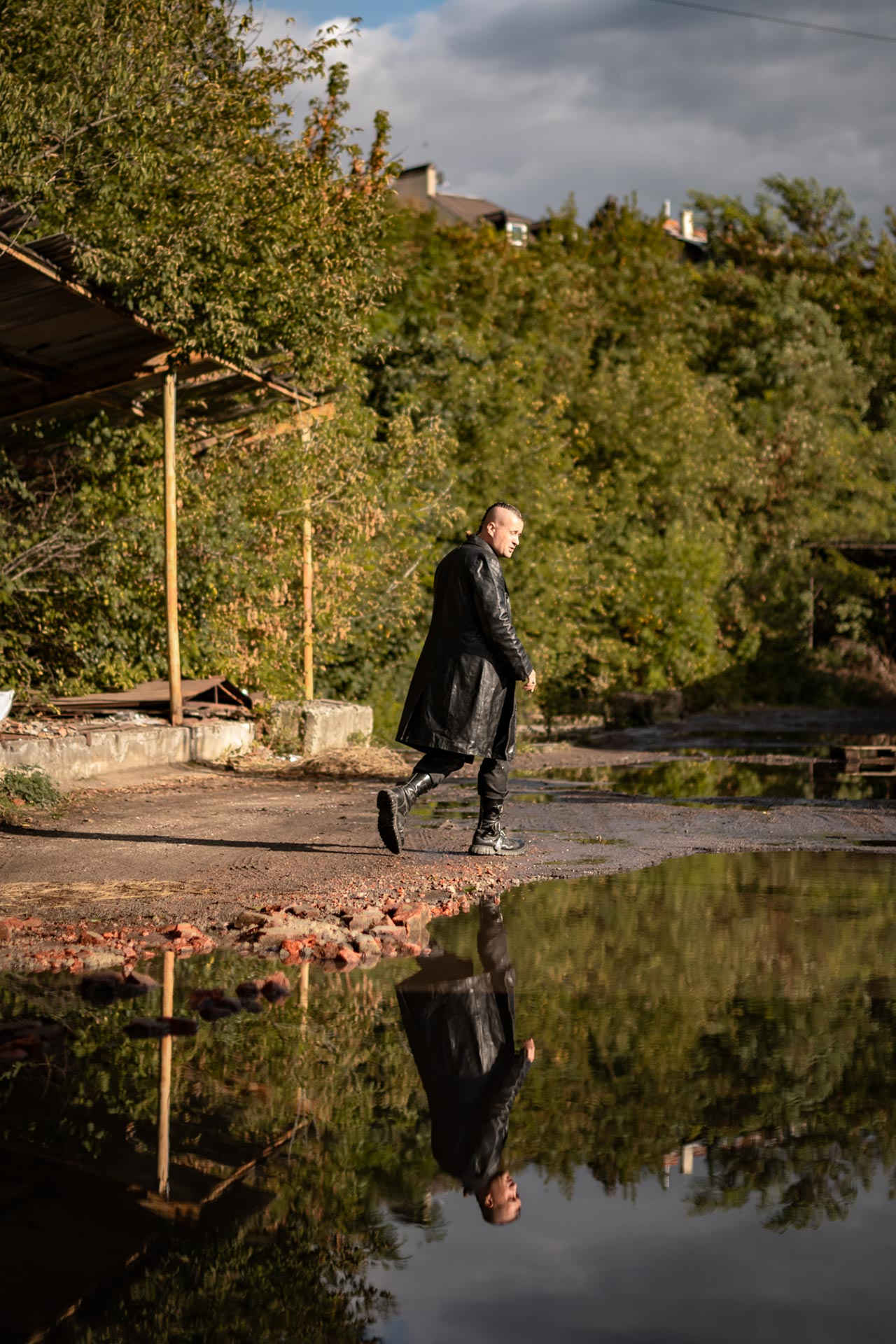
There is also a small brick oven made of broken molded glass. So, if someone has a bowl shade, glass plates like this — Soviet era things that used to decorate shelves — we heat them again and make these small decorative glass houses.
Roman agrees that recycling and giving things a second life is extremely important. He tells us how together with similar-minded people he devises different ways to reuse things at their laboratory:
—Technology is changing. These used to be plain windows, we give them second life, since there’s no point in throwing away the glass. So we don’t throw it away… We give it a second life. So here we have ordinary glass —it is not perfectly flat, it is not perfectly clean, but it gives noise insulation, and we use them as interior walls for thermal insulation and waterproofing. We don’t throw anything away. Instead, we constantly repair things. Everywhere: where it is possible and even not possible
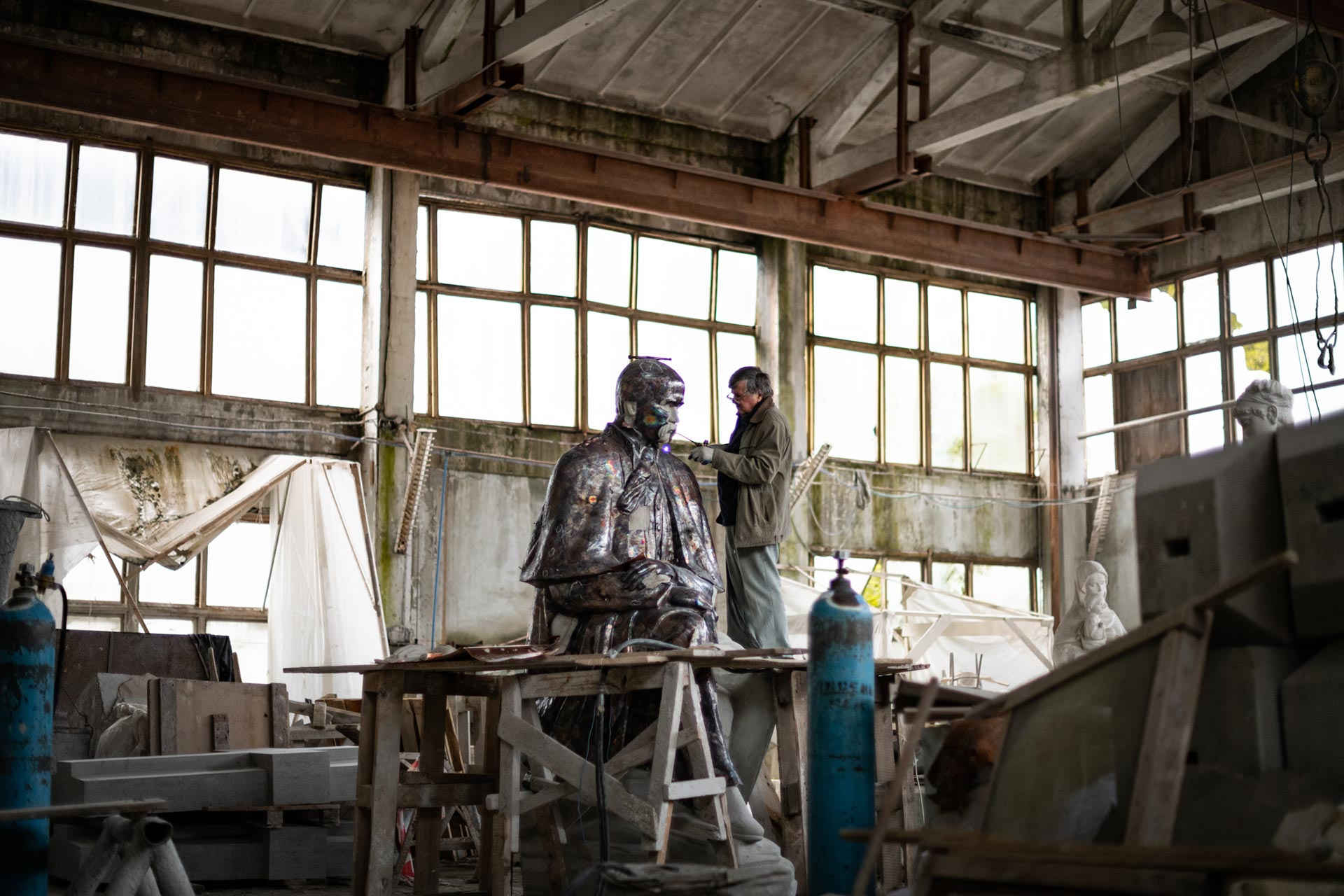
Artists’ interesting experiments
It has become a widespread practice in Europe of reviving abandoned industrial facilities. While the exterior of these buildings remains unchanged, the function of the plant or factory changes, usually becoming art centers, museums, or creative spaces (read our stories on revitalization of spaces in Ivano-Frankivsk and Lviv). TSEKH represents yet another Ukrainian example of bringing new life to an abandoned factory.
Roksolana says that they used to rent a warehouse at the factory, gathering together everything that could be used for any kind of renovation or recycling. Roman adds that this place has given them a new direction for their developing ideas:
— Our TSEKH — is the new name of the place, and the location itself — is the Lviv Experimental Ceramics and Sculpture Factory. There were bent furnaces where experimental glass and ceramics were made.
(Editor’s note: TSEKH succeeded in obtaining a 300 square meters building within a bigger 8-hectare industrial complex owned by the Lviv Ceramics and Sculpture Factory).
— The place hadn’t been operating for more than 10 years and was closed. Now we are trying to somehow revive it with a new vision. The factory was closed, now we work exclusively for the public. So, people wanted to see (something else – author’s note), besides a bar, besides football. Bars and football aren’t bad, but we need to do something more. We want to maximize how many people come to the factory… Even stairs have been placed in Shevchenko Park just in case. When people are bored they can come over and visit us.
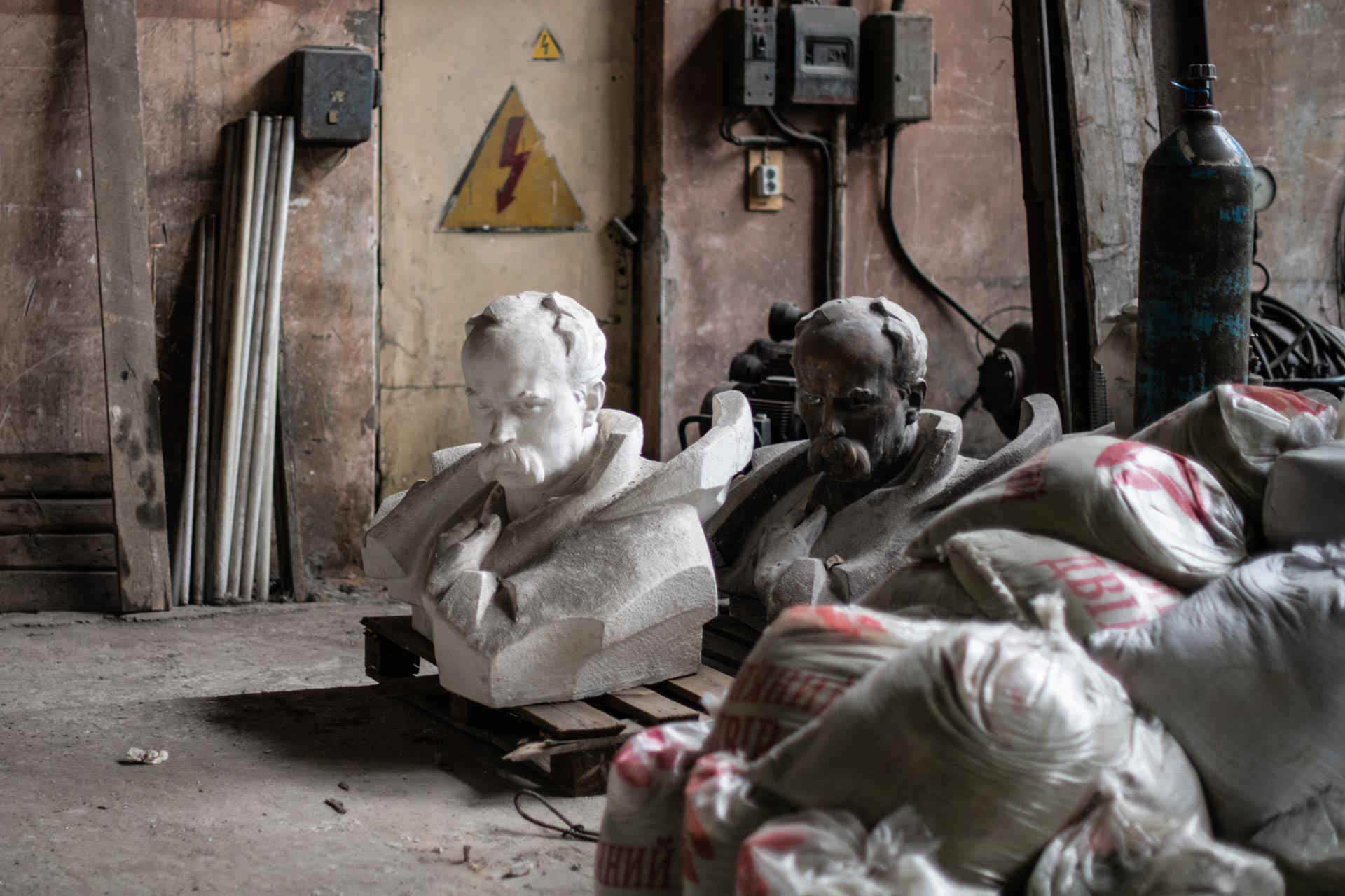
Roman shares the story of how TSEKH came to be:
— The owner of the factory is the Lviv Union of Artists. That means there are 5500 owners. For a long time, there was no specific management. A couple of years ago, they found a very cool firm of smart people, smart minds. And then finally we found the finances, people were interested, and it all came together perfectly.
He believes that for visions to be realized, it is important to be proactive and do everything you can:
Everything depends on the team: someone can always complain that everything is terrible and the president sucks, in contrast, we put in windows that were urgently needed ourselves in the place because when we first got the facility where TSEKH is, we still hadn’t finished our discussions with the manager, but even so we already put in the windows. There are people who constantly complain, and there are those who simply go ahead and do something.
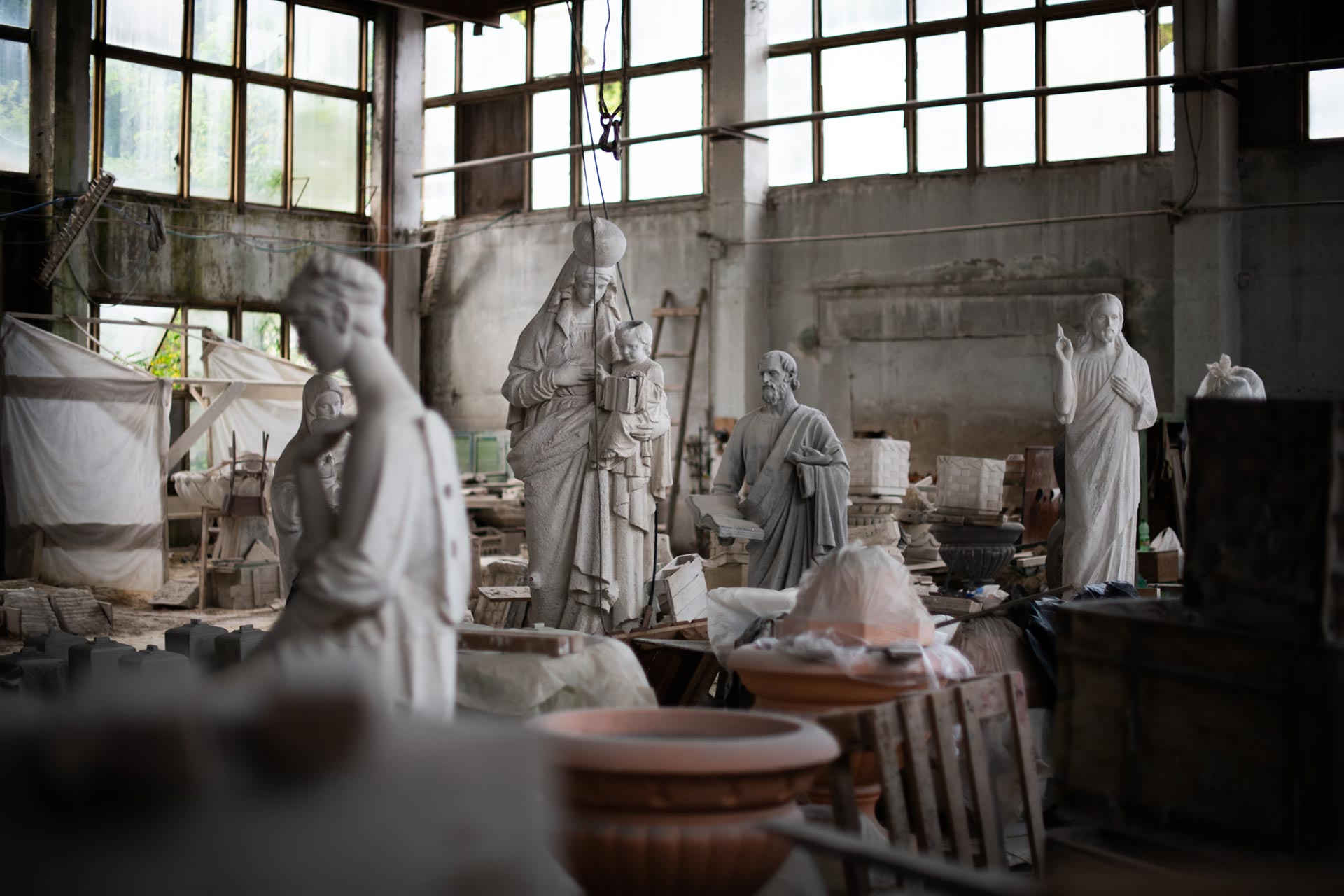
The founders’ main goal is to promote Ukrainian craftsmanship, industrial design and art education. TSEKH is located in the central administrative building of the Lviv Experimental Ceramics and Sculpture Factory, and used to be a dining room for artists and masters. It is divided into working and recreational areas where you can engage in creative production processes, develop professionally or simply be inspired. Thus, one of the rooms is intended for master classes, another for lectures, and adjacent to the rooms is the coffee shop, where you can have a cup of something delicious. Roksolana has also made room for her brand, Haluzka.
Roman told us about the various events TSEKH hosts and how they lead to social change. Here you can not only learn how to create glass, clay, textiles and wood products, but also watch a film or take part in a discussion:
— We already have master classes, lectures, meetings, presentations, I don’t know … Because people do not want to be only at the institute and be identified by a single profession. They want to become more fulfilled and varied in their interests over time, that they change with time. Under the Soviet system, you studied at one institute and then went to work at one factory and there you stayed for the next 80 years. Now it’s different: people yearn for something more interesting in their everyday lives. We do not offer just a single master class. We can work with the same person 70-80 times and offer something interesting every time. In this way, we make the phrase “Something interesting” real for those who come.
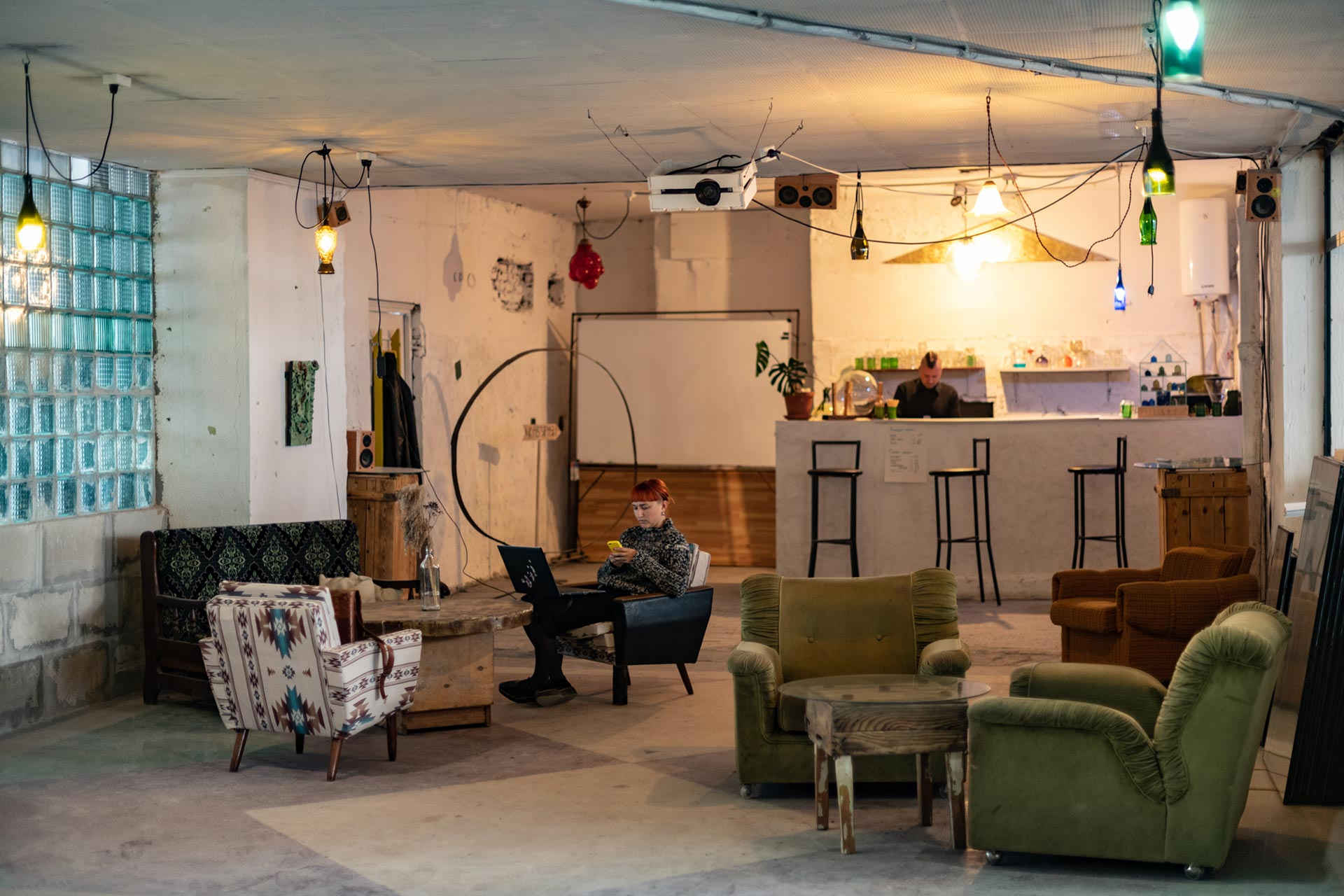
Learn something new
TSEKH offers educational options: master classes for all tastes, depending on the interests of guests. Here you can learn how to make something with your own hands whether it’s pottery, ceramics, sewing, textile, egg painting, woodwork or, of course, glass:
— We teach people how to make jewelry, mirrors, and lamps. Sometimes there are a lot of people who come other times it’s just one person.
Previously, the organizers held a series of meetings around the theme of recycling glass containers. You could learn how to cut and sinter a bottle, how to create a stained-glass florarium or make a lamp out of wine bottles:
— At our master classes we are cutting the bottles, and then polishing them. At least 100 people took part in some of our biggest master classes. And it’s great that people are very interested. Now we’re going to cut the bottle, and then we’re going to have to polish it, because it’s sharp, and all these grinders of these machines are recycled juicers, and that’s it: “Oh, great! Cool!” And by the winter season, they’re painting New Year’s balls.
The founders are particularly interested in showing how to work with hot glass using muffle and glass furnaces. Roksolana is excited that there is a lot of diversity, both in terms of age and level of training, amongst the visitors at TSEKH. There are plans to make more personally tailored glass making workshops:
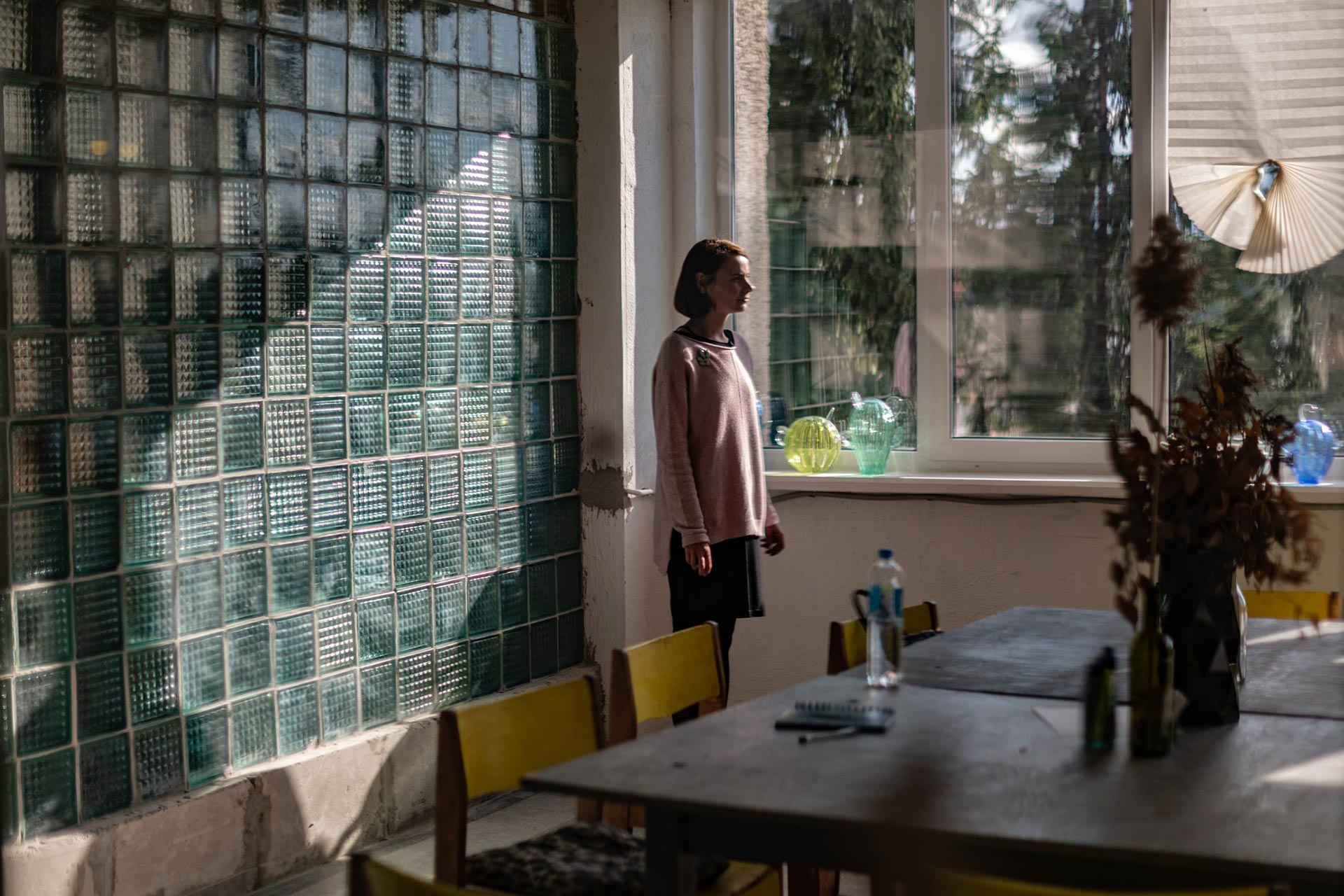
— Younger kids who are still in school come to us. In the future, we have also thought about opening a mini-course on glass, so that we could have more practice and theory, in case someone does not have time, because there are also older people who come to us, … In our business, there are people who tell us what they need, and we want to learn from them as well.
From a little dream and a lot of friends’ efforts a big business has grown and continues to develop. Nowadays, many people are enthusiastic about all that Roman and Roksolana’s are doing. Some people go to “Something interesting”, for the coffee and original accessory or a souvenir, while others help to collect bottles for further recycling, and still, others go to the master classes or listen to an interesting lecture to inspire their own creativity.
On March 5, 2019 the co-founder of “Something interesting” Roman Musyala died. Despite this, the team continues its work.

